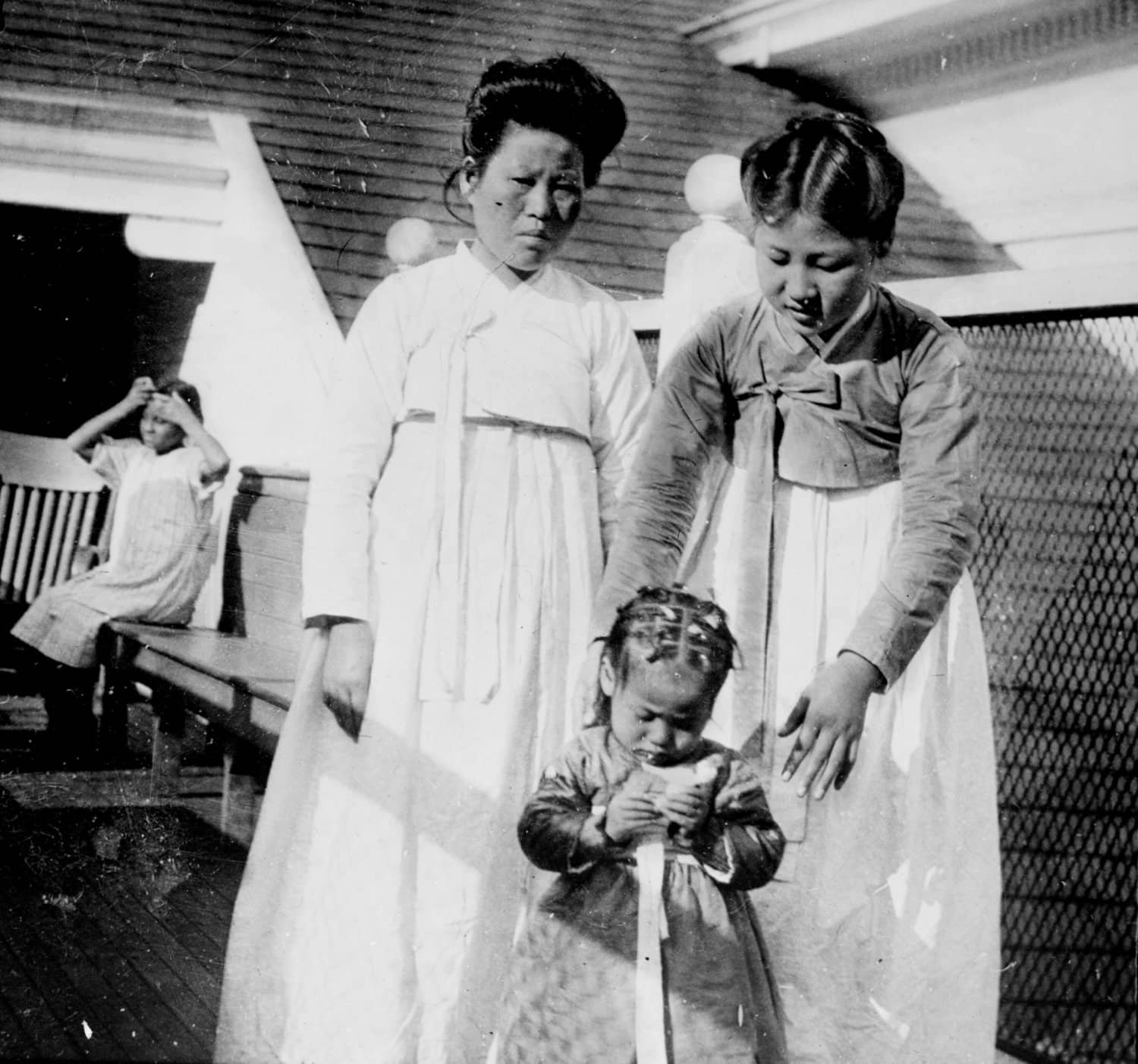Module 1: Overview
Have their ongoing ties with Korea impacted the lives of Korean Americans?
When many people think about Korean Americans today, the 1992 Los Angeles riots in California, also known as the Los Angeles uprising, is one of the first things that comes to mind. Thanks to narrow and distorted mainstream media depictions of the uprising, which Korean Americans refer to as Sa I Gu, Korean immigrants typically appeared as either powerless victims of urban violence or as racist interlopers exploiting Black and Brown communities for their own selfish gain. A closer look at history, however, offers additional perspectives and stories to this inaccurate and incomplete portrayal.

Image 14.01.01 — Two Korean women and a child dressed in traditional clothing at Angel Island Immigration Station. The Station, housed on Angel Island in the San Francisco Bay, was active between 1910 and 1940.
Created date, created by Name, Title Italicized. Credit line indicating where the image is from. Metadata ↗
From the first wave of Korean immigration to the United States at the dawn of the twentieth century, Koreans have organized and mobilized for international and local causes. Before 1945, that cause was for Korea’s independence from Japan. During the late 1970s and early 1980s, Koreans fought for justice on behalf of a wrongly incarcerated young man named Chol Soo Lee in San Francisco, California. After 1992, Korean immigrants in Los Angeles responded to their community’s massive uninsured property losses and abandonment by the police by investing more deeply in US politics and society.
This module provides an overview of how Korean migration to the United States was shaped by Japanese colonization of Korea and Koreans’ decades-long fight for independence. We will learn about the different waves of Korean immigration from 1903 to the present day, Korean Americans’ lives and experiences in the US upon resettlement, and the community’s growth as a result of key events like Sa I Gu.
What are the push and pull factors that led Koreans to immigrate to the United States?
How have Korean American demographics shifted over time?
How are Korean Americans depicted in the media?








